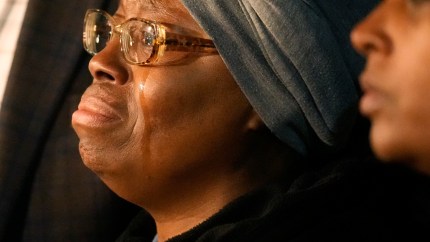Migraines, kidney failure associated with stroke for ages 18 to 44, study finds
Traditional risk factors for strokes include high blood pressure, high cholesterol, Type 2 diabetes, smoking, obesity, physical inactivity, alcohol misuse and heart disease.
Strokes are typically caused by high blood pressure and other traditional risk factors. But for adults under 35 who have a stroke, migraine headaches and other nontraditional risk factors may be more likely to blame, new research finds.
The higher risk declines as people age, according to the study, published Tuesday in the American Heart Association journal Circulation: Cardiovascular Quality and Outcomes.
“There have been many studies demonstrating the association between migraines and strokes, but to our knowledge, this study may be the first to demonstrate just how much stroke risk may be attributable to migraines,” lead author Dr. Michelle Leppert said in a news release. Leppert is an assistant professor of neurology at the University of Colorado School of Medicine in Aurora.

Traditional risk factors for strokes include high blood pressure, high cholesterol, Type 2 diabetes, smoking, obesity, physical inactivity, alcohol misuse and heart disease. However, previous research shows an increase in strokes among young adults who don’t have these risk factors and that women under 45 have a higher stroke rate than men, even though they have a lower rate of traditional risk factors.
“We wanted to understand which risk factors were the top contributors to stroke risk among young adults,” Leppert said.
She and her colleagues analyzed health insurance claims data for more than 2,600 people in Colorado who had strokes and more than 7,800 people who didn’t to determine which risk factors were most strongly associated with strokes. The study included people 18 to 55 years old. The majority of the strokes were ischemic, which occur when a blood vessel to the brain is obstructed by a clot.
Among people 45 to 55, nontraditional risk factors were responsible for 28% of strokes in women and 19% in men. But in adults 18 to 44 years old, nontraditional risk factors were significantly associated with the development of strokes, with that link strongest among people under 35. Nontraditional risk factors included migraines, blood clotting disorders, kidney failure, autoimmune diseases and cancer.
Among people under 35, nontraditional risk factors were associated with 43% of strokes in women and 31% in men. Migraine topped the list, accounting for nearly 35% of strokes in women and 20% in men, but its contribution to stroke risk decreased with age. Traditional risk factors among the under-35 group were linked to 33% of strokes in women and 25% in men.
Recommended Stories
Traditional risk factors among adults 35 to 44 contributed to 40% of strokes in women and 33% in men. High blood pressure was the most important traditional risk factor, increasing in importance as people aged. Among adults 45 to 55, it was responsible for 27% of strokes in women and 28% in men.
The researchers were surprised to find that nontraditional risk factors, especially migraines, played such a big role in the development of strokes in young adults, Leppert said.
“The younger they are at the time of stroke, the more likely their stroke is due to a nontraditional risk factor,” she said. “We need to better understand the underlying mechanisms of these nontraditional risk factors to develop targeted interventions.”
Never miss a beat: Get our daily stories straight to your inbox with theGrio’s newsletter.








